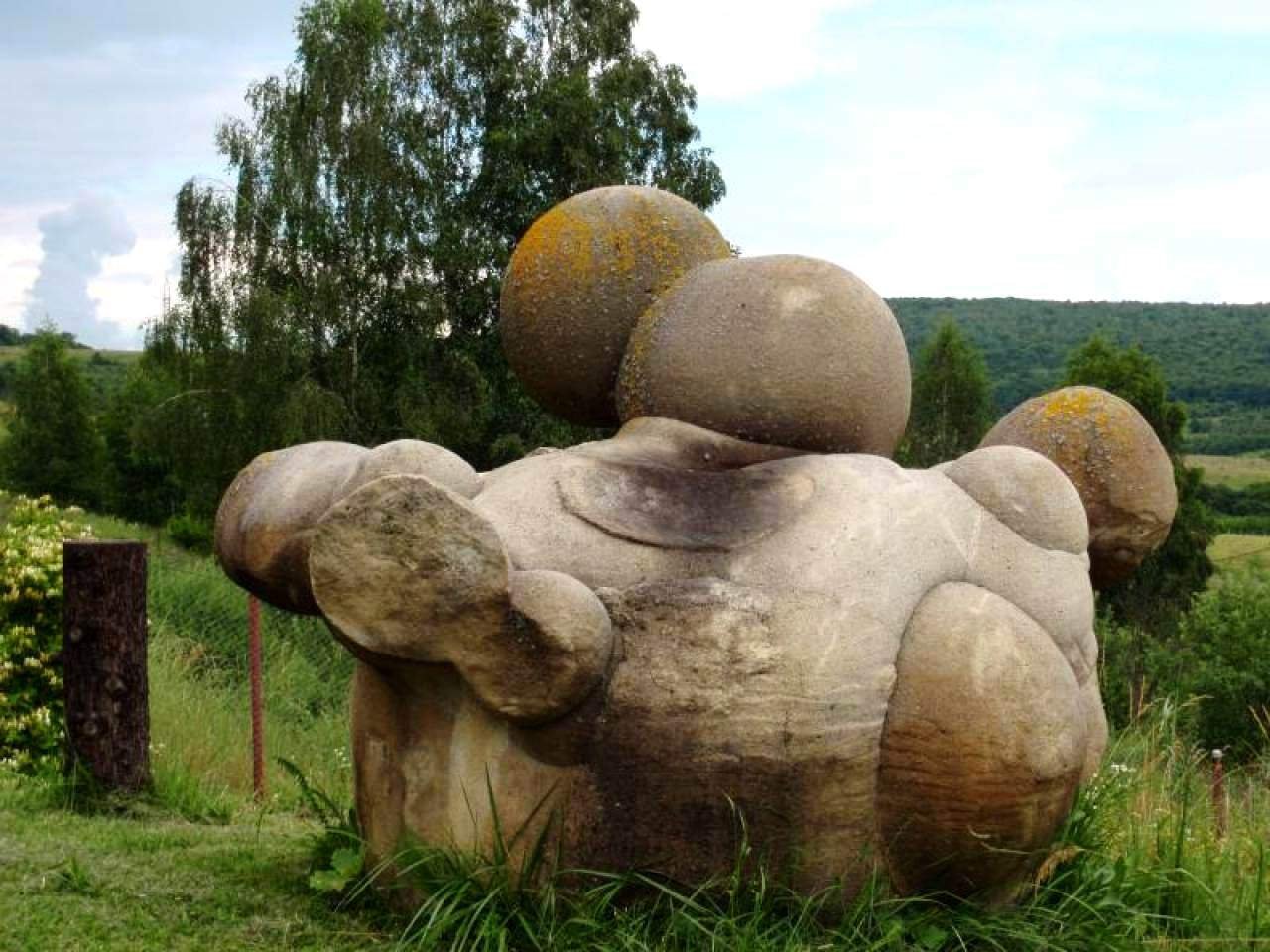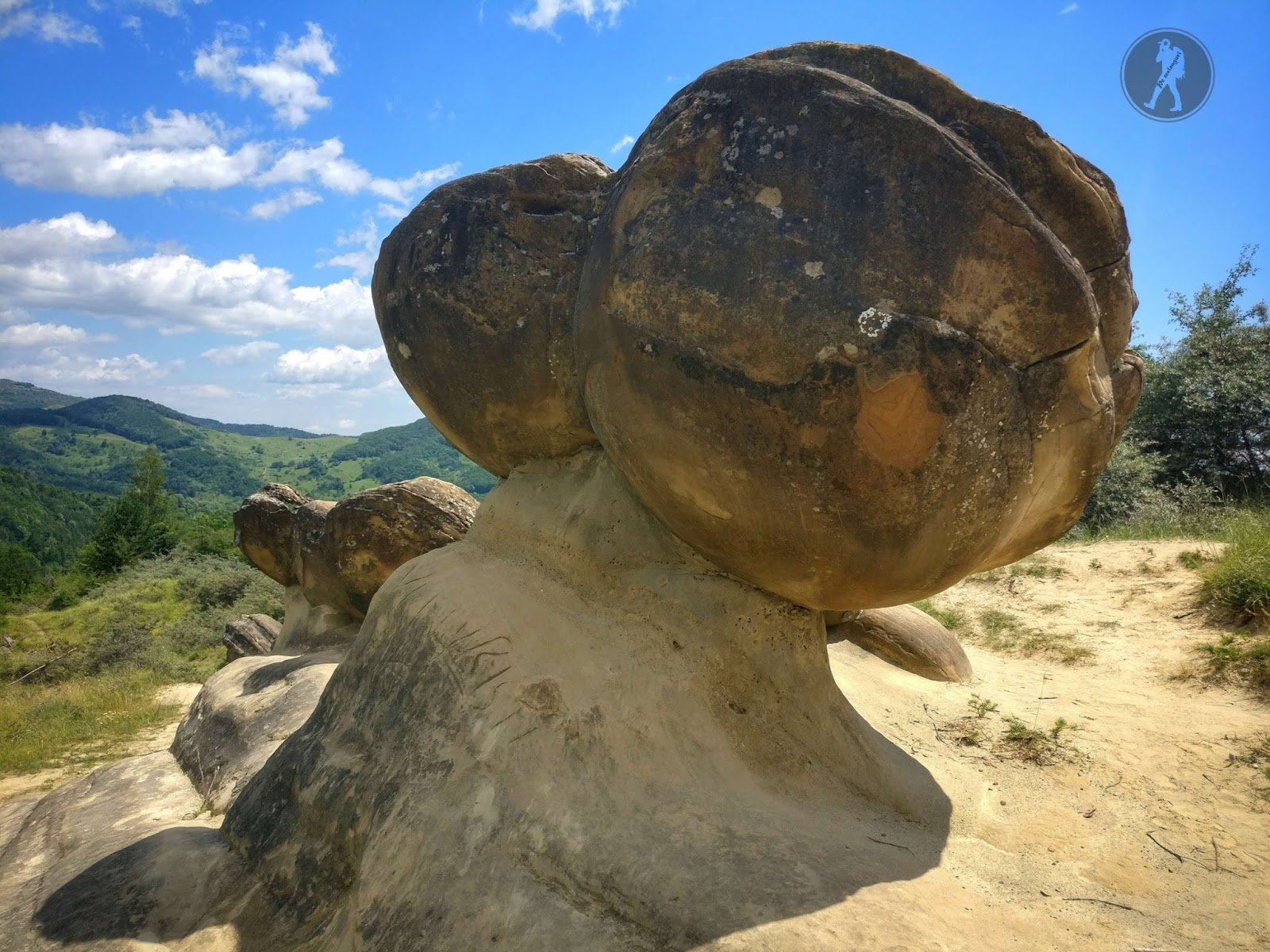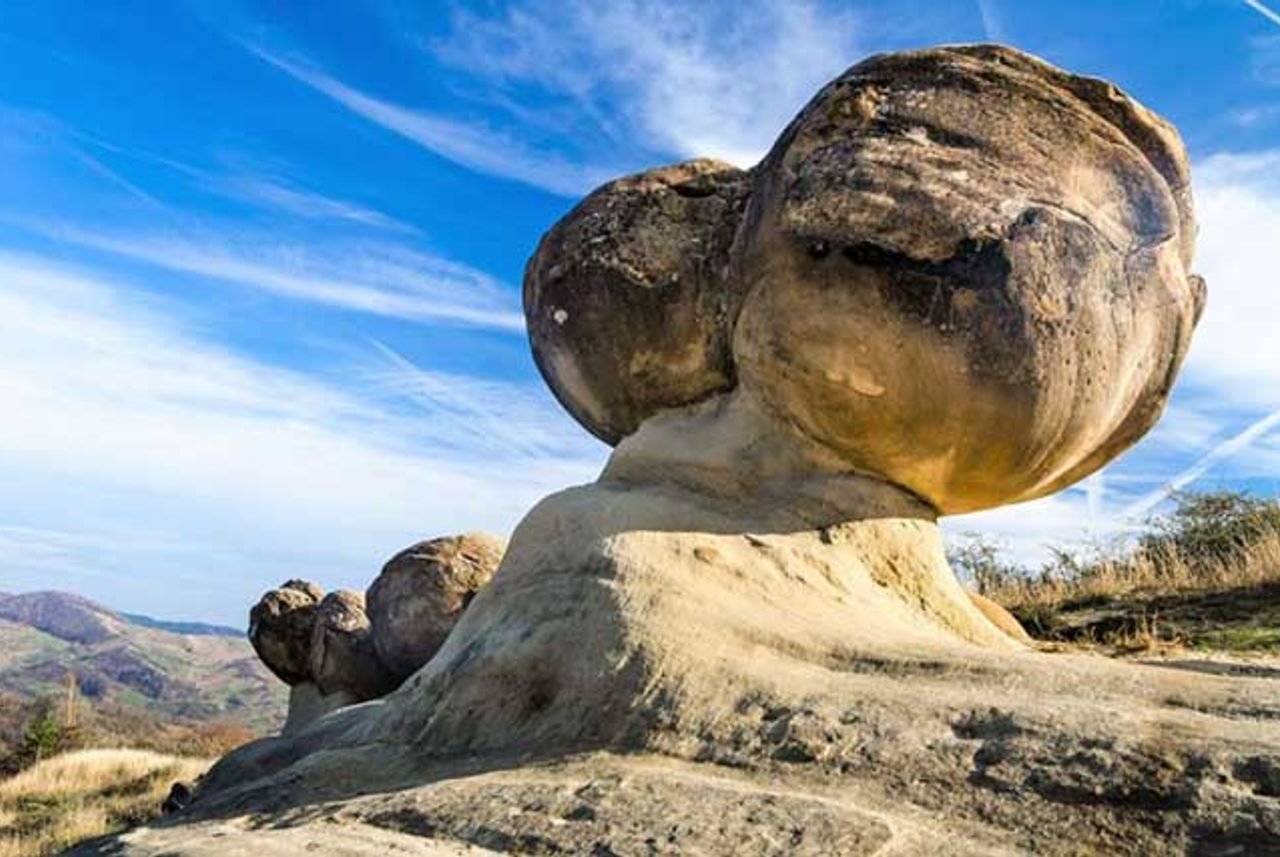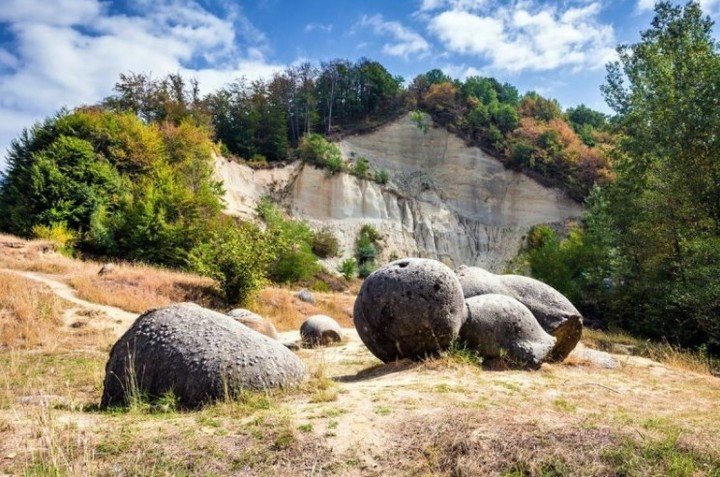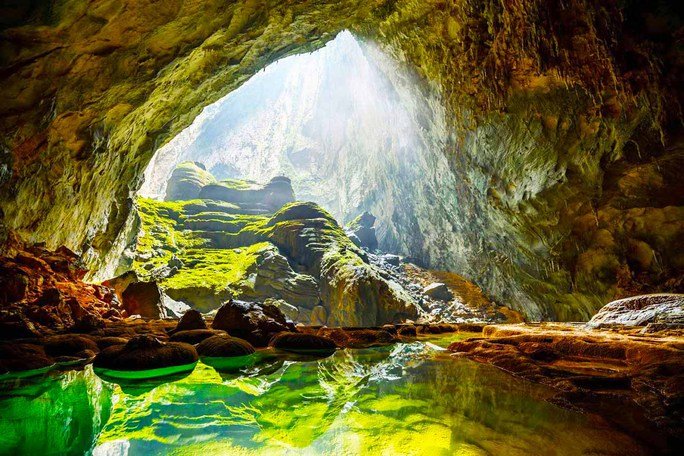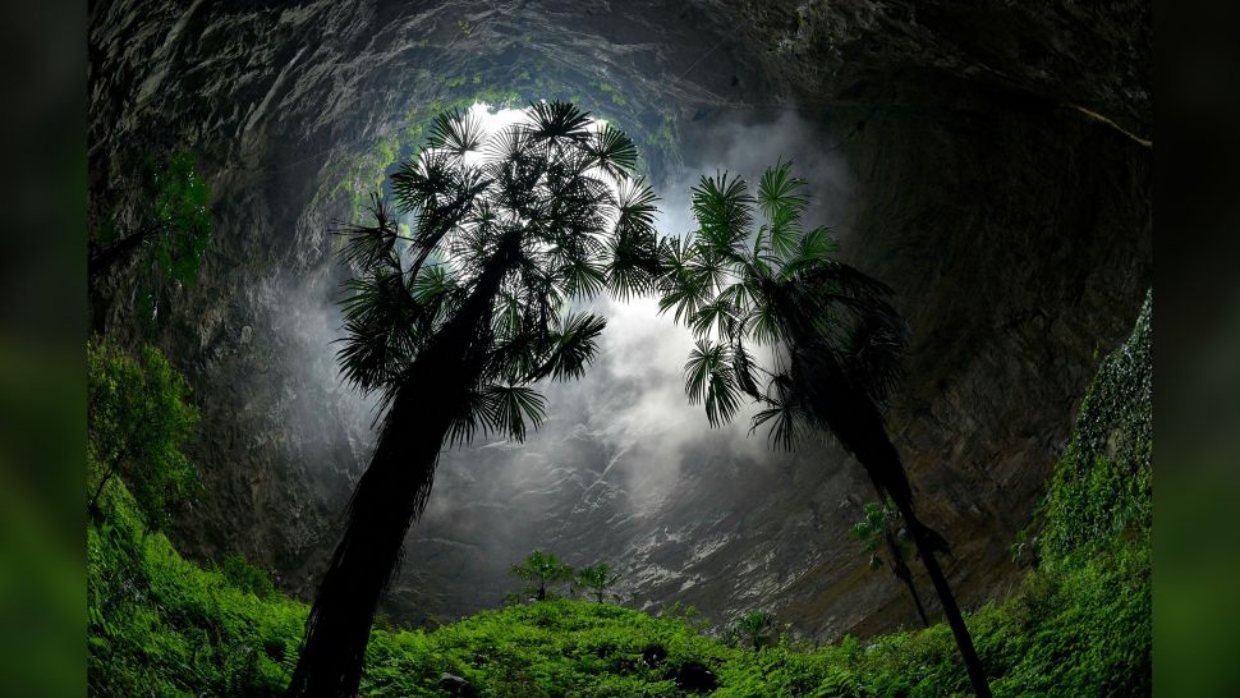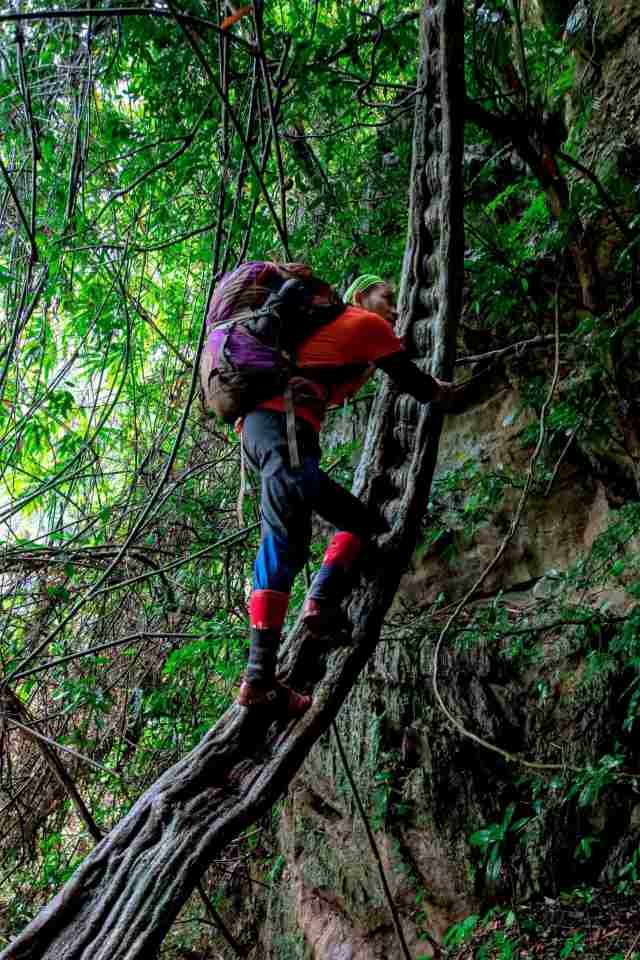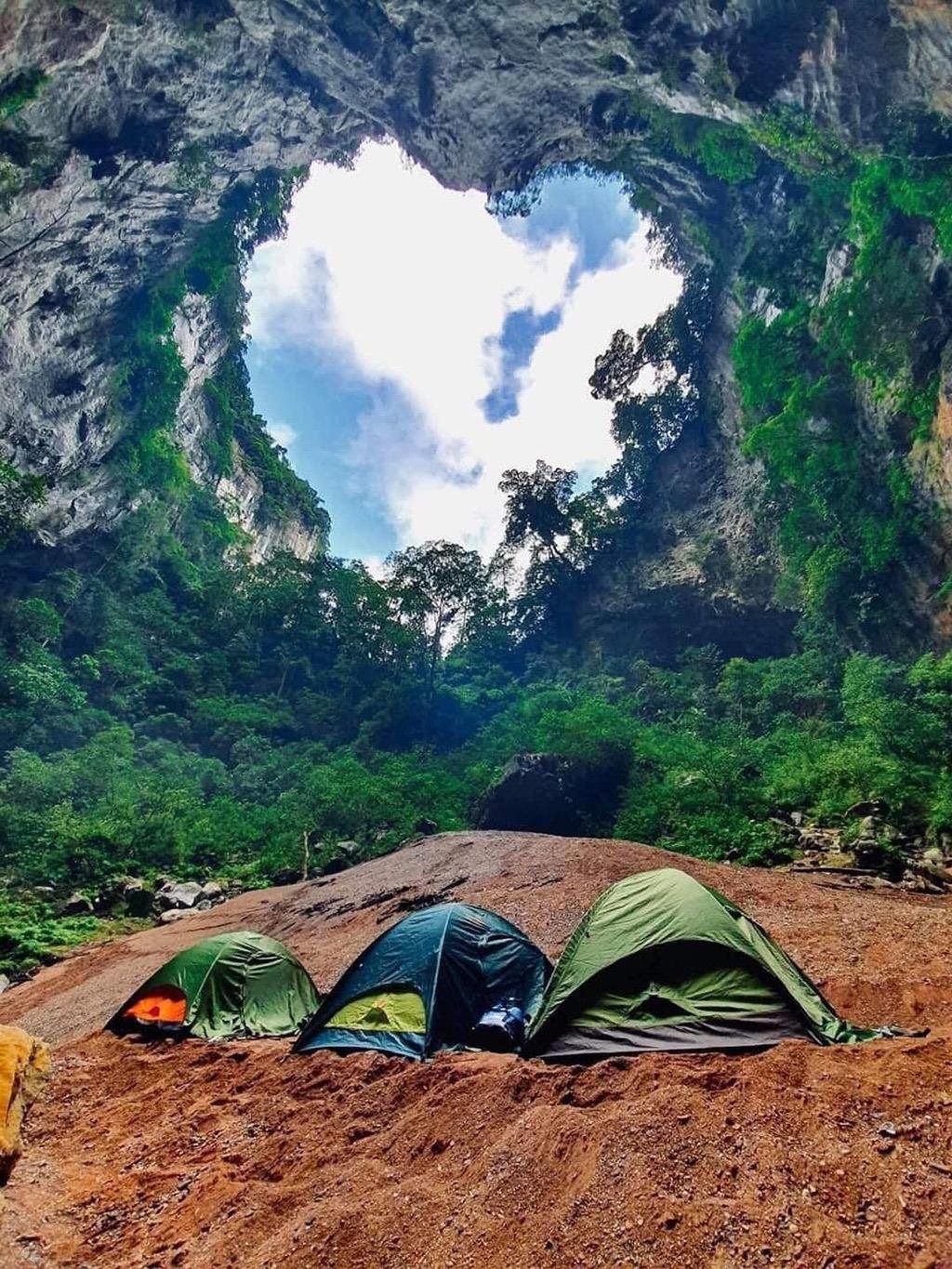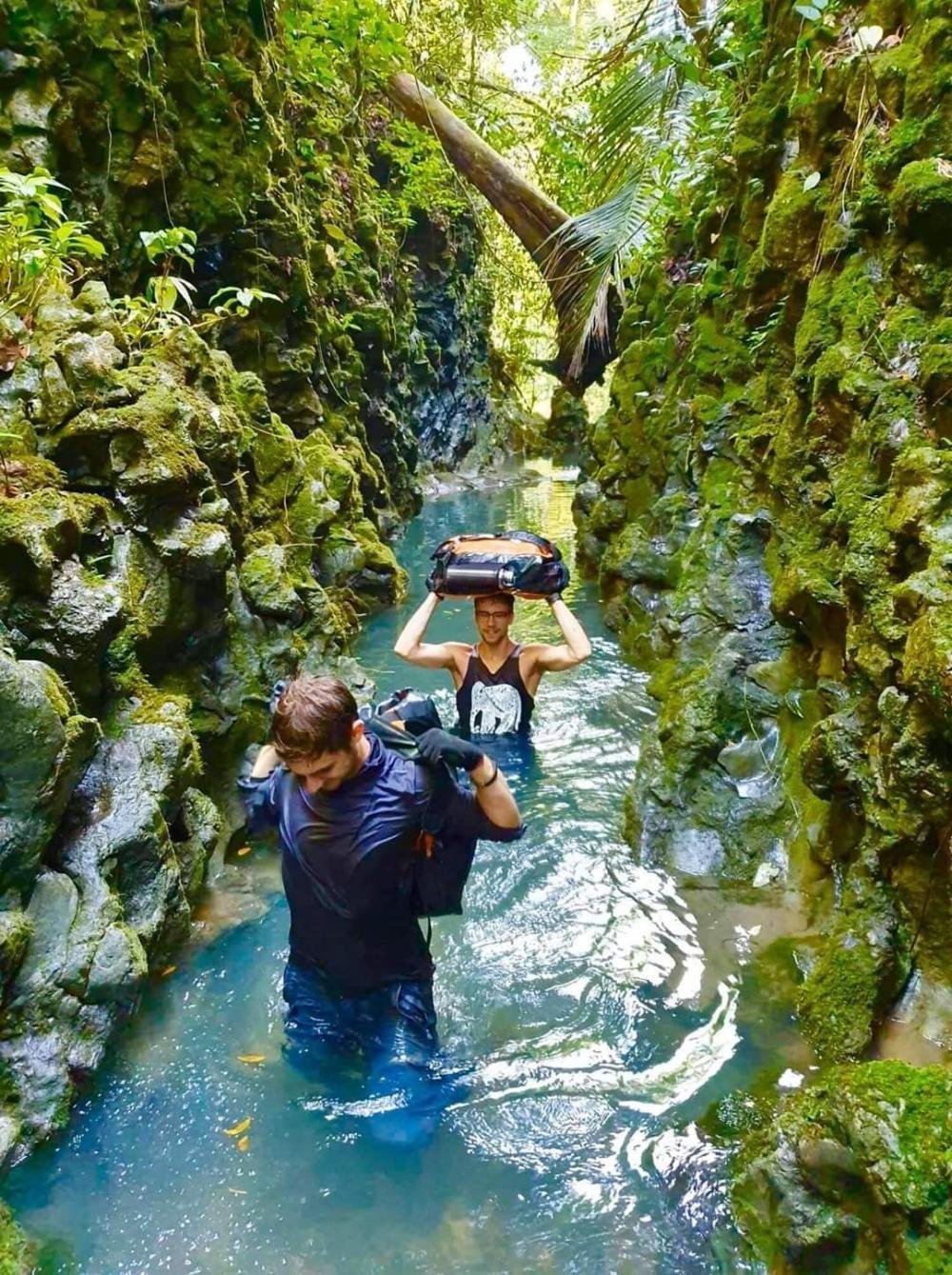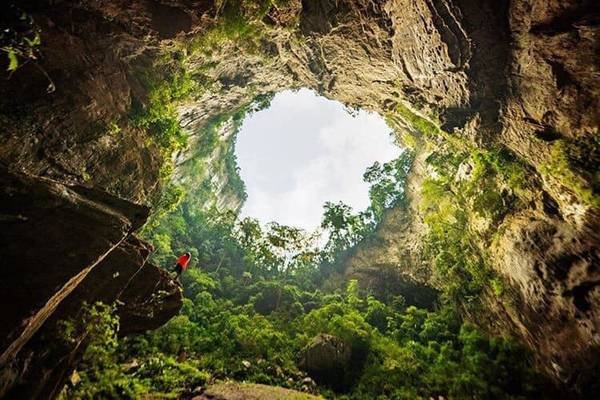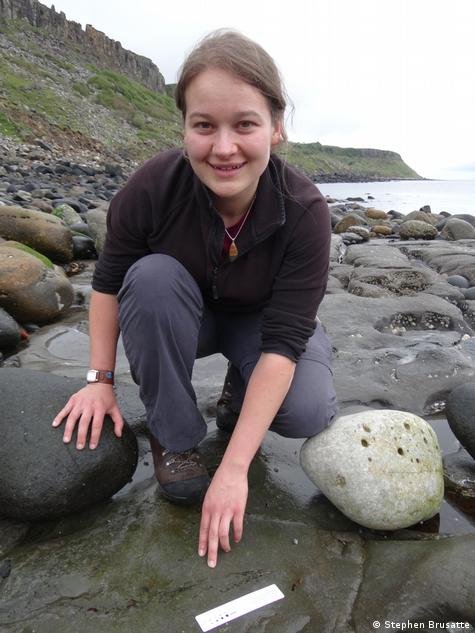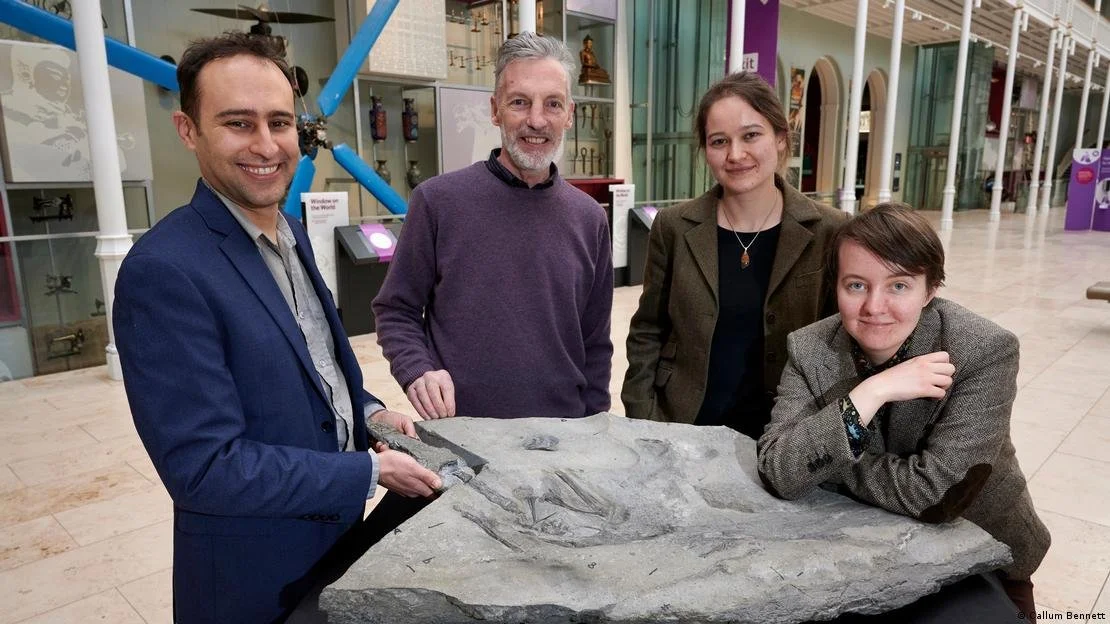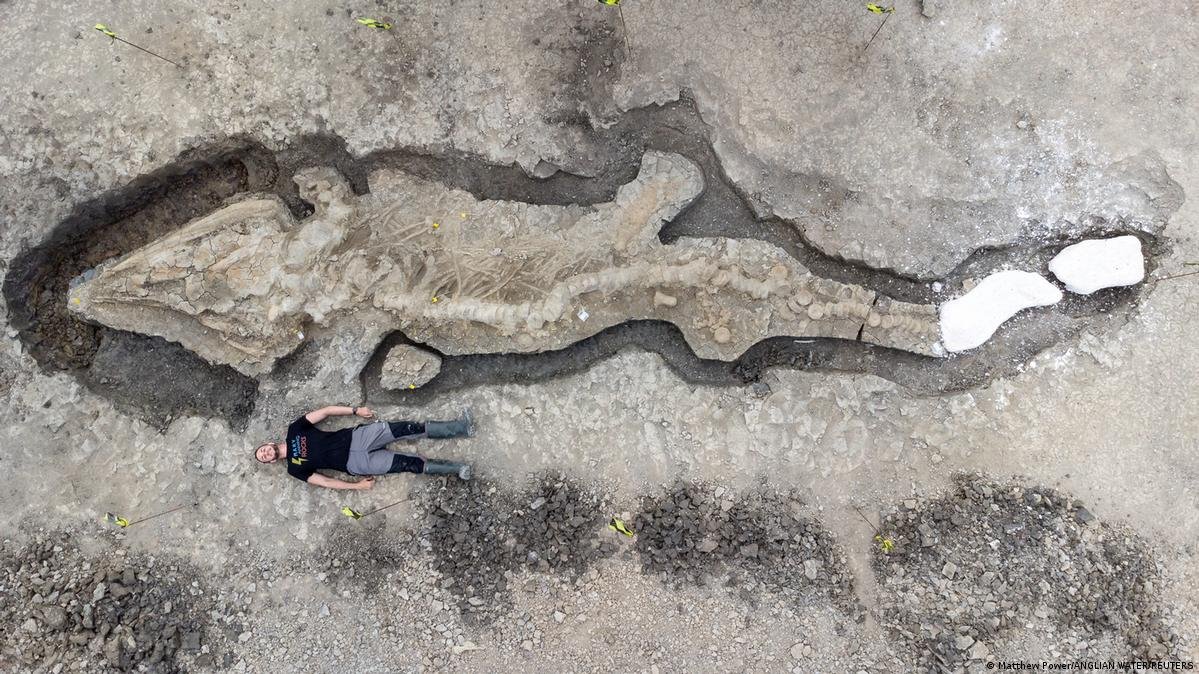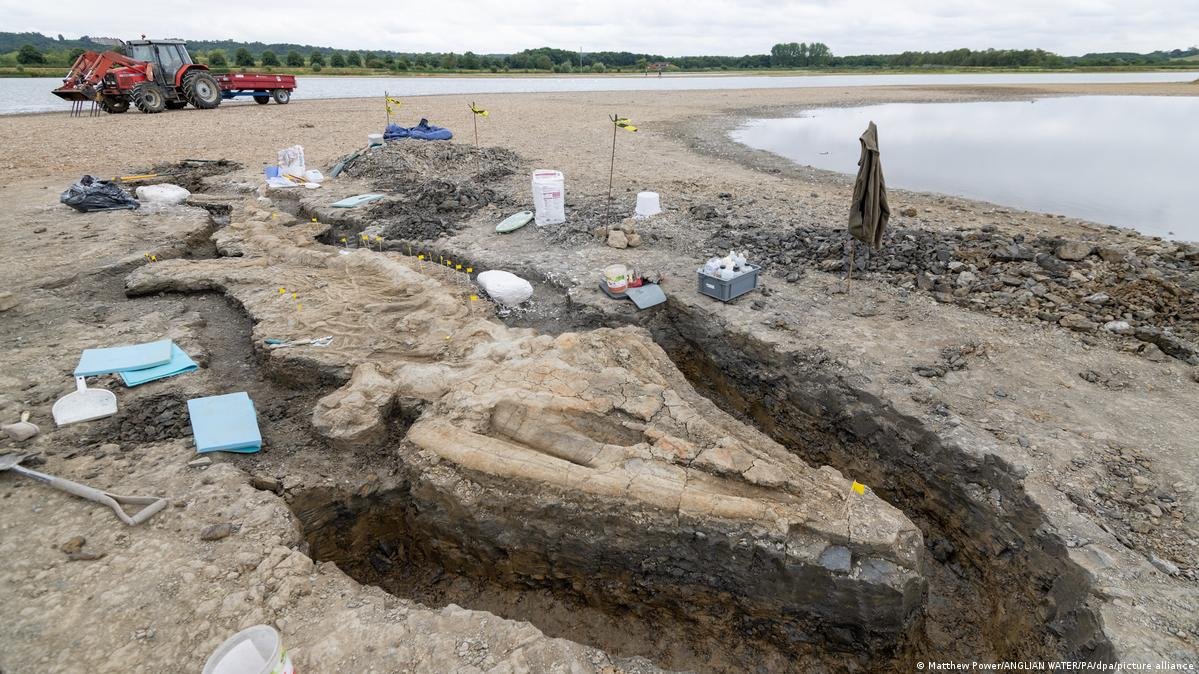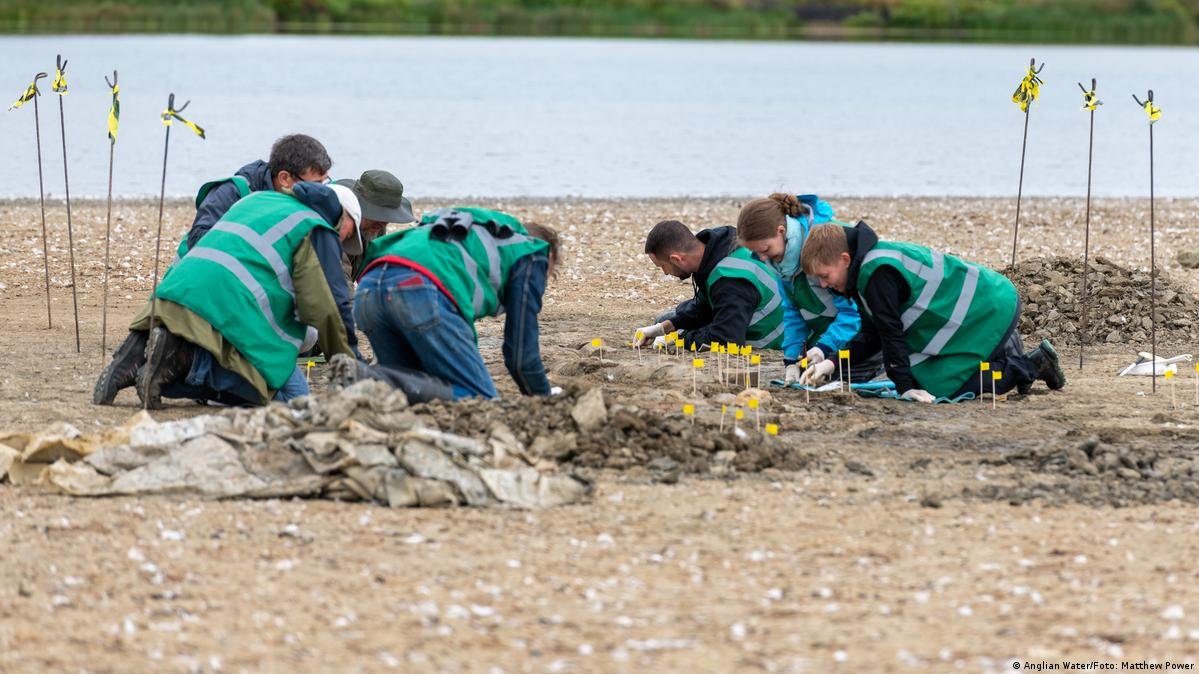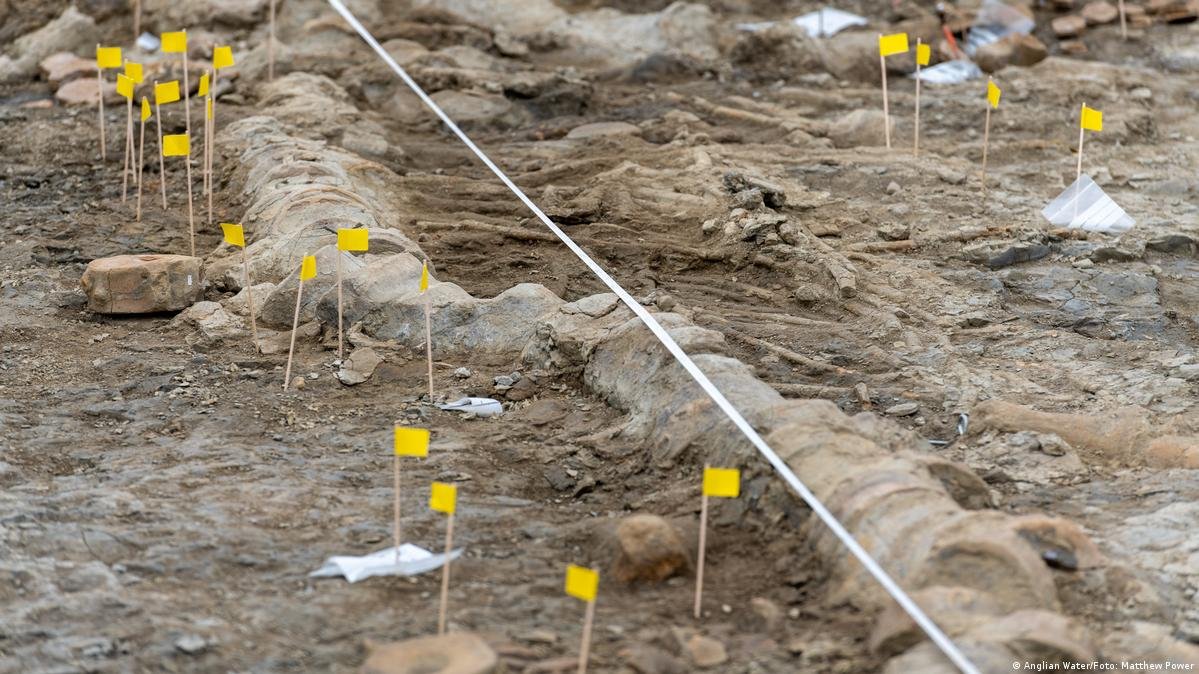In this video, you’ll find out: what could have been the prototype for the Garden of Eden? How high did the actual tower of Babel reach? Could Noah's Ark actually withstand a real flood? And finally: among all the things described in the book of Genesis, what might have happened in real life?
Neanderthal Misconceptions
Neanderthals are our closest relatives and their extinction 40,000 years left us as the last remaining member of the genus Homo.
Misconceptions about them, however, have continued to prosper since their demise, and we hope that this video succeeds in lessening the impacts of such negative misconceptions.
What Just Happened Inside The Tomb Of Cleopatra SHOCKED Scientists
Recently, an incredible event took place inside the famous Cleopatra's Tomb in Egypt, causing a great deal of excitement among historians. This astonishing development has prompted experts to reevaluate their knowledge of Cleopatra, the renowned Egyptian queen, and the political landscape of her era. While the full details are yet to be unveiled, this remarkable find has the potential to revolutionize our understanding of Cleopatra and her reign. Moreover, it may pave the way for future excavations and the discovery of more hidden treasures. Let's delve into what we currently know about the possible location of Cleopatra's tomb, where archaeologists have made a groundbreaking discovery that could reshape our historical perspective. This remarkable finding has remained concealed for centuries, but its significance is now being brought to light.
Homo Neanderthalensis: 'The Neanderthal Man' | Prehistoric Humans Documentary
What comes to mind when you think of a neanderthal? Even though perceptions of these ancient humans have changed drastically over the past few decades, it's still likely that the word is synonymous with brutish, primitive, knuckle-dragging apes. The classic image of Homo neanderthalensis, the neanderthal, is that of a dim-witted savage, wielding a colossal club which it uses to bash its tribe mates on the head. 20th-century pop culture is full of these depictions, and the general public all over the world has come to know the neanderthal as a monster, a subhuman, more ape than man. The reality could not be more different.
Homo neanderthalensis was in fact as human as you and we - they lived complicated lives, they created music and art, they were exceedingly intelligent, and they even interbred with us, the first Homo sapiens. That's right - it's more than likely that your DNA contains that of the neanderthals that were roaming much of the Northern Hemisphere in the Late Pleistocene Epoch. These early men and women were just that - men and women. Although they belonged to a different species to our ancestors, they were just as human as you and we, only in their own way. Obviously, there are no living, breathing neanderthals around today, but we do know they coexisted with our ancestors. So, what happened to them? Where did they all go?
Today, we will be answering these questions and more as we take an in-depth look at Homo neanderthalensis, some of our closest cousins in the hominid world. We will look at many aspects of neanderthal life as we do so - their culture, their lifestyles, their evolution, and their appearances. Join us, as we take an intriguing trip into the lives, loves and legacies of Homo neanderthalensis - the neanderthals.
Homo Habilis: The First 'Humans' | Prehistoric Humans Documentary
Just less than two and a half million years ago, in the Early Pleistocene epoch of Eastern Africa, a group of hairy, bipedal apes evolved, and soon after, began to use basic stone tools. They didn't know it, but they were the first species of a new genus that would one day transform the world beyond recognition. This was Homo habilis - the very first species of true human, under the genus name Homo - the full binominal name translating to 'handy man'. For almost a million years, these apes would live in social colonies across the plains and savannahs of Eastern and Southern Africa, and were our earliest human ancestors. Life wasn't easy for them, though. The plains of prehistoric Africa were wild, filled with danger, and life was often short and perilous. Homo habilis persisted however, and a group of individuals would one day split from the species, stepping one pace closer on the path to you and me. Today, we will be taking a look at how these strange early apes lived, how they evolved, how they were built, where they lived, and, ultimately, how they died. Welcome to our documentary on Homo habilis - the very first species of human.
The Discovery In The Desert That Has Scared The World
In the following video we will be talking about a discovery in the desert that has scared the world. Watch the video to find out more!
10 Mysterious Antarctica Discoveries
Venture with us into the icy enigma that is Antarctica, a frost-kissed frontier of the world still veiled in obscurity. From cities found frozen to hidden alien bases, we invite you on an expedition to unearth the top 10 most mysterious discoveries frozen within this white wilderness. Brace yourselves as we step beyond the known, peeling back the icy layers of Antarctica, and delve into secrets as captivating and cold as the continent itself!
What Is Was Like To Be A Slave In Ancient Rome
In the following video we will be explaining what it was really like to be a slave in Ancient Rome. Watch the video to find out more!
Most Surprising Facts About Vikings!
Check out the most surprising facts about vikings! This top 10 list of interesting viking facts will surprise you! Enjoy!
What You Need to Know About the Tower Of Babel
Was the Tower of Babel real? When did the events at the Tower of Babel happen? During this presentation you’ll explore the history of the tower and associated events and repercussions. Learn about Nimrod, who was “a mighty hunter before the Lord” and others of Noah’s descendant – and perhaps where your particular ancestors came from. You’ll discover that all people are related through Noah and all are in need of a Savior.
The Buried Mysteries Of Wale's Ancient Druids
The Island of Anglesey was once home to one of history's most mysterious groups: the Druids. The Romans accused them of magical rituals, human sacrifice and even cannibalism, and soon after the invasion, the full force of the Roman army descended on this small island. Their mission: to destroy this stronghold of the British resistance.
Odyssey is your journey into the world of Ancient History; from the dawn of Mesopotamia to the fall of Rome. We'll be bringing you only the best documentaries that journey into the mysteries and ruins of worlds long lost.
America Before Columbus - The Secret Continent
It is the year 1491. America is a vast land with vast resources, but it is not a pristine wilderness. The continent is inhabited by a hundred million people. They live in complex urban societies that know little of each other.
This is the story of the Columbian Exchange, the greatest cultural exchange in history. We explore life in America and Europe in 1491, and why America was “discovered” and not the other way around.
Scientists Uncover Gorgeous 2,000-Year-Old Etching of a Giant Cat in Nazca Desert
A cat lies in the Sun in Peru, its ears up and alert, its belly exposed, and tail stretched out.
The cat is 37 metres (120 feet) long, and around 2,000 years old. It's a geoglyph recently discovered in the famous Nazca desert in Peru.
After authorities began improving access to a lookout point called the Mirador Natural, a research team noticed a barely visible cat on a hillside.
"It's quite striking that we're still finding new figures, but we also know that there are more to be found," Johnny Isla, Peru's chief archaeologist for the Nazca lines, told the Spanish news agency EFE.
The Nazca lines are huge drawings in the soil of the Nazca desert, mostly created by the Nazca culture between 500 BCE and 500 CE.
Underneath the reddish-brown pebbles of the desert is a yellow grey soil; when the top layer is removed, it exposes a lighter colour underneath. There's not much rain, wind, or erosion in the region, so the human-made formations could stay in relatively good nick for thousands of years.
The sub-layer of soil also contains high amounts of lime, which hardens with exposure to moisture (such as from morning mist) and helps keep the lines safe from erosion for thousands of years.
Some of the Nazca lines are geometric shapes, some are simple lines, and some are combined into elaborate depictions of animals and objects, often stretching several metres and best seen from afar or from the skies above.
This particular geoglyph of a cat has been dated to between 200-100 BCE, meaning it's part of the Late Paracas period. As the Nazca culture began in around 100 BCE, this could mean that the older Paracas culture may be responsible for creating the cat.
It also makes the cat older than any of the other geoglyphs found in the area.
"The discovery shows, once again, the rich and varied cultural legacy of this site," the ministry said in a statement.
Although we're not sure about why these huge symbols were etched into the desert, recent studies have given us some clues – suggesting that they may have served as travel markers, or to be seen by deities in the sky.
In recent years with new technological tools, scientists have been able to find many more of these geoglyphs, but we've also seen some of the lines damaged by everything from truck drivers to Greenpeace.
The cat has avoided a similar fate being found when it did, as the ministry explains it "was about to disappear because it's situated on quite a steep slope that's prone to the effects of natural erosion".
Now it's been carefully cleaned up, and is looking as good as new (we assume). We're glad this ancient cat gets to enjoy the light of the Sun once more.
The mystery of Romania’s living stones: they grow, reproduce and breathe
They look like something from an alien plantation on another planet.
But the 'living' rocks of Romania known as the 'trovants' really are of this Earth – and they're naturally formed by geological processes.
Starting out as pebbles and growing at about two inches per millennium, the trovant stones are unique mineral structures that mimic plant and mammal life.
The bizarre bulbous stones almost appear to grow in the same way as plant tissue and they give 'birth' to new stones just like an animal.
The trovant stones are found in a small Romanian village called Costeşti, about 50 miles west of capital Bucharest.
They look like blown bubbles made of rock and vary greatly in size, some spanning several feet in diameter, others small enough to fit in the palm of the hand.
'The trovants from Romania have very different ages,' Dr Mircea Ticleanu at the Geological Institute of Romania told MailOnline.
'Trovants do not simply appear from the ground; they are present in the mass of sands of different geological ages which reach natural outcrops or in sand quarries.'
Trovants is a synonym for the German term 'Sandsteinkonkretionen', which means 'cemented sand'.
'The word "trovant" was used for the first time in geological literature from Romania,' said Dr Ticleanu.
Visitors to the Costeşti site can walk by the large variety of spherical and ellipsoidal trovant stones, which grow slowly over time in the presence of rainwater.
They're mainly composed of a hard stone core, surrounded by sand that forms the shell.
Minerals in rainwater form a reaction within that builds pressure inside, which makes the rock grow and multiply.
Much like the rings that make up the girth of trees, the trovants reveal layers when cut into, each representing a period of growth.
Although not alive in the scientific sense, locals and tourists alike have described them as 'living' because of the way they appear to change with time.
Costeşti isn't the only location where the trovant stones are found; a study co-authored by Dr Ticleanu describes them all over the Carpathian area of Romania.
However, the ones at Costeşti are well known and have large diameters. They are spherical and egg-shaped, but many of them have twinned, complicated forms.
One of the features of the Costeşti trovants is the presence of numerous 'microtrovants' (smaller, spherical tubercles) on the surface of the big ones.
'Beside the big trovants there are a lot of smaller, imperfect ones, but with a clear tendency to sphericity,' the study says.
'All these trovants are placed in yellow, fine, medium or coarse sands containing also fine gravel.'
Imjin War - Japanese Invasion of Korea 1592-1598
In the documentary below we will analyze the Imjin War - the Japanese Invasion of Korea between 1592 and 1598, during which the armies of the Shogunate fought against the allied Korean and Chinese armies. This conflict is famous for many dramatic battles and sieges, and the naval heroics of the Korean admiral Yi Sun-sin.
Divers found a perfectly preserved ancient Chinese underwater city
BY THE ARCHAEOLOGIST EDITOR GROUP
After being flooded in 1959, the Chinese city of Shicheng was left in obscurity. Divers may now explore a 600-year-old metropolis that has been submerged and unseen for decades thanks to its recent rediscovery.
The underwater city of Shicheng, frequently referred to as the "Atlantis of the East" by tourists, is a stunning, enigmatic time capsule of Imperial China. A perfectly preserved piece of stone architecture from the Ming and Qing dynasties, which ruled from 1368 to 1912, is located 40 meters beneath Qiandao Lake in Zhejiang province, 400 kilometers south of Shanghai.
Shicheng, which in Mandarin means "Lion City," was purposefully flooded in 1959 to make room for the Xin'an Dam and its adjacent hydropower facility, unlike the legendary Atlantis. For the project, about 300,000 people were evacuated, some of them had families who had been residing in the city for centuries.
As the Chinese government organized an expedition to see what could be left of the long-lost metropolis, the city was "rediscovered" in 2001. When the Chinese National Geography published some previously unseen images and graphics in 2011 speculating how the small city, which measured approximately half a square kilometer, may have appeared in its heyday, interest and exploration surged even further.
Expeditions and underwater images have shown that the city had five entrance gates instead of the usual four, with gates facing the other cardinal directions as well as two in the west. The city's wide alleys include 265 archways with surviving stonework of lions, dragons, phoenixes, and historical inscriptions; the city walls are said to have been constructed in the 16th century. Some of these inscriptions date as far back as 1777.
Shicheng has been beautifully conserved despite being submerged; in fact, the water shields it from wind, rain, and sun degradation. Advanced divers can now take regular dives between April and November with dive companies like Big Blue and Zi Ao Dive Club to get up close to the ruins. The dive is only available to divers with deep water, night, and buoyancy experience because the ruins have not yet been completely mapped.
Scientists Discover Giant Sinkhole in China With Primeval ‘Lost World’ Inside
Cave explorers stumbled upon a prehistoric forest at the bottom of a giant sinkhole in South China earlier this month. Sinkholes such as these are also known in Chinese as Tiankeng, or "Heavenly pit."
At 630 feet deep, the sinkhole would hide the Washington Monument and then some. The bottom of the pit holds an ancient forest spanning nearly three football fields in length, with trees towering over 100 feet high. And according to the Chinese government, it is one of 30 enormous sinkholes in the county.
The sinkhole was discovered by cave explorers outside Ping'e village in Leye County, South China's Guangxi Zhuang Autonomous Region. A team of explorers descended into the pit on May 6 2022, where they found ancient trees and other plant life, according to a Guangxi news release.
Karst is a type of topography, ideal for geological wonders like the sinkhole in Leye County, created by groundwater dissolving the limestone rock beneath the surface, according to the U.S. Geological Survey. About 20% of the United States is made up of karst landscapes, including attractions such as Carlsbad Caverns in New Mexico and Mammoth Cave in Kentucky.
About 13% of China is covered by karst topography, according to NASA, with the Guangxi region being a prime example of its beauty.
Karst landscapes vary in size and shape depending on the surrounding climate, George Veni, executive director of the National Cave and Karst Research Institute, told Live Science.
"In China you have this incredibly visually spectacular karst with enormous sinkholes and giant cave entrances and so forth," Veni said. "In other parts of the world you walk out on the karst and you really don't notice anything. Sinkholes might be quite subdued, only a meter or two in diameter. Cave entrances might be very small, so you have to squeeze your way into them."
Veni's institute is the sister organization of the team that discovered the new sinkhole, the Institute of Karst Geology of the China Geological Survey. Chen Lixin, who led the Guangxi cave expedition team, said the prehistoric trees at the bottom of the pit are almost 130 feet high and the dense brush on the forest floor stands shoulder-high, according to the Guangxi news release.
Archaeologists in Scotland Discover the World's Largest Jurassic Pterosaur Fossil
Scotland is well known for its cloudy days and constant rain. One hundred and seventy million years ago, it was much warmer and tropical ― and it had huge reptiles with a wingspan of 2.5 meters (8.2 feet) soaring the skies.
That's what researchers learned from a fossil that was discovered on the Isle of Skye, in northwest Scotland. The findings were published in Current Biology earlier this week and describe the biggest pterosaur from the Middle Jurassic period discovered so far.
The new species is called Dearc sgiathanach pronounced "jark ski-an-ack," which is a Scottish Gaelic name meaning both "winged reptile! and "reptile from Skye."
The discovery is "a superlative Scottish fossil," Stephen Brusatte told DW. The paleontologist at the University of Edinburgh led the National Geographic Society-funded expedition that found "Jark" back in 2017.
He was referring to the state of preservation of the fossil, "far beyond any pterosaur ever found in Scotland and probably the best British skeleton found since the days of Mary Anning in the early 1800s," he said.
Anning was a famous English paleontologist from the first half of the 19th century who discovered many fossils, including the first pterosaur skeleton outside of Germany.
Flying reptiles, not dinosaurs
Pterosaurs, or pterodactyls as they are commonly known, were flying reptiles that existed from the Late Triassic, which was around 228 million years ago, to the end of the Cretaceous, 66 million years ago, when an asteroid wiped out almost all life on Earth.
Pterosaurs were the first vertebrates to fly. For those who grew up with the movie series "The Land Before Time," they may be already familiar, since Petrie, one of the main characters, was a Pterosaur.
Even though their name might suggest it, pterosaurs are not dinosaurs. They are close cousins that evolved on a different branch of the reptile family tree.
Before the discovery of this fossil, scientists used to think that pterosaurs were rarely bigger than 1.6 meters during the Triassic and the Jurassic, Brusatte said, but "now we know they were capable of getting much bigger."
A very rare fossil
The fossil was spotted in 2017 by then-PhD student Amelia Penny at the shores of the Isle of Skye, at a place known as Brothers' Point. She saw part of the jaw and teeth protruding from a lime stone.
Brusatte said team members became excited when they found out that it wasn't just a skull but a whole skeleton. He said it was a challenge to free the fossil from the rock, because the tide was rising quickly, so they had to wait until midnight, when the water had receeded, to finish cutting the fossil out of the rock.
The team had to leave the find overnight until members were ready to carry out the full excavation the next morning, Brusatte said, praying that no one would stumble into the precious fossil.
Natalia Jagielska, lead author of the paper, told DW that another thing that makes this fossil so rare is that it's already hard to find any Middle Jurassic fossils, but it's even harder to find pterosaurs.
"They are very rarely preserved in the fossil record," Jagielska said. "They are very very delicate, have very thin bones and get crushed."
Picturing 'Jark'
So what might D. sgiathanach have looked like?
Although the degree of preservation was remarkable, the fossil still had many missing parts.
That's why, Jagielska said, it took detective and forensic work to get an idea of its appearance. The team used a lot of other pterosaur fossils from many different museums to fill in the blanks and complete the puzzle.
Jagielska, who is also an illustrator, described the pterosaur as a creature with four legs and a 2.5-meter wingspan — close to that of an albatross. Its forearms were modified into wings and much larger than its hindlegs, and it had four fingers, with the fourth one being very elongated to extend its membranous wings, similar to modern bats. It also had a long tail for balance and very sharp teeth, most likely for fish catching.
A deeper look into its skull revealed that it probably had good eyesight and a very good sense of balance, "both features very helpful for a flying animal," Jagielska said.
And: The skeleton didn't belong to an adult. When analyzing bone slices under the microscope, the Scottish researchers found out that D. sgiathanach was still growing.
Jagielska said she wanted people who see the fossil on display at the National Museum of Scotland to take a moment and think about the fact that they are looking at the remains of an animal that was flying over Scotland 170 million years ago, "preserved with many of the features it had when living."
12 Most Amazing Ancient Technologies That Actually Exist
Everybody always wants the latest technology. In the modern era, none of us can wait to get our hands on the latest iPhone, smart TV or video games console. People in ancient times were just as enthusiastic about technology as we are. The technology they got excited about may have looked and functioned very differently from the technology of today, but it was still amazing - and this video contains the proof!
Top 9 ‘oldest’ archaeological sites in the world
Burrup Peninsula, Australia
Murujuga, also known by the modern name Burrup Peninsula, in northwestern Australia, is home to potentially the world’s oldest and most endangered petroglyphs. Some of the more than one million images are more than 40,000 years old.
Erbil Citadel, Kurdistan, Iraq
Among the oldest continually inhabited areas on Earth, this walled settlement looming over modern Erbil, in Iraq’s northern Kurdish region, shows signs of occupation dating to the fifth millennium B.C. Erbil citadel was inscribed as a UNESCO World Heritage site in 2014.
Göbekli Tepe, Turkey
Built beginning in the tenth millennium B.C., Göbekli Tepe seems a re-creation of paradise, with stelae carved in images of exotic plants and animals. Now in a desert, the giant temple complex is thought by some to be the inspiration for the biblical Garden of Eden. Ancient human figurines have been found.
Cave of El Castillo, Spain
Some of the oldest known paintings in the world are in the Cave of the Castle, in Cantabria in the north of Spain. Thought to be more than 40,000 years old, many of the images are stencils of ancient hands made by artists blowing paint from their mouths.
Lascaux Caves, France
Over 2,000 images of horses, cows, cats, birds, and their human hunters seem as vivid today as when they were painted in these caves more than 17,000 years ago. Discovered in 1940 in what is today southwest France, the cave is closed to the public, but a replica is open for visitors.
Potok Cave, Slovenia
Cro-Magnon people—the first anatomically modern humans—found shelter in this central European cave complex, using the nearly 23,000 feet (7,010 meters) of limestone tunnels as a ritual site or hunting station some 36,000 years ago in what is modern Slovenia.
Jericho, Palestinian Territories
Jericho’s walls came tumbling down, and their ruins are the major tourist venue in this West Bank city established perhaps 11,000 years ago, among the oldest inhabited sites in the world. A nearby cable car takes visitors west to the Mountain of Temptation, where Jesus is said to have been tempted by the devil.
Ġgantija Temples, Malta
Somewhere around 3600 B.C. the ancient temples of Ġgantija were built on Gozo Island in Malta, among the oldest Neolithic structures in the world. They are thought to be dedicated to the Great Earth Mother goddess and, legend says, constructed by giants.
Skara Brae, Scotland
Inhabited more than 5,000 years ago, the Neolithic town of Skara Brae flourished on Mainland, the largest island in the Orkney archipelago. Strong storms in 1850 led to its discovery, revealing intricate stone roofs, ceremonial structures, and even furniture.




